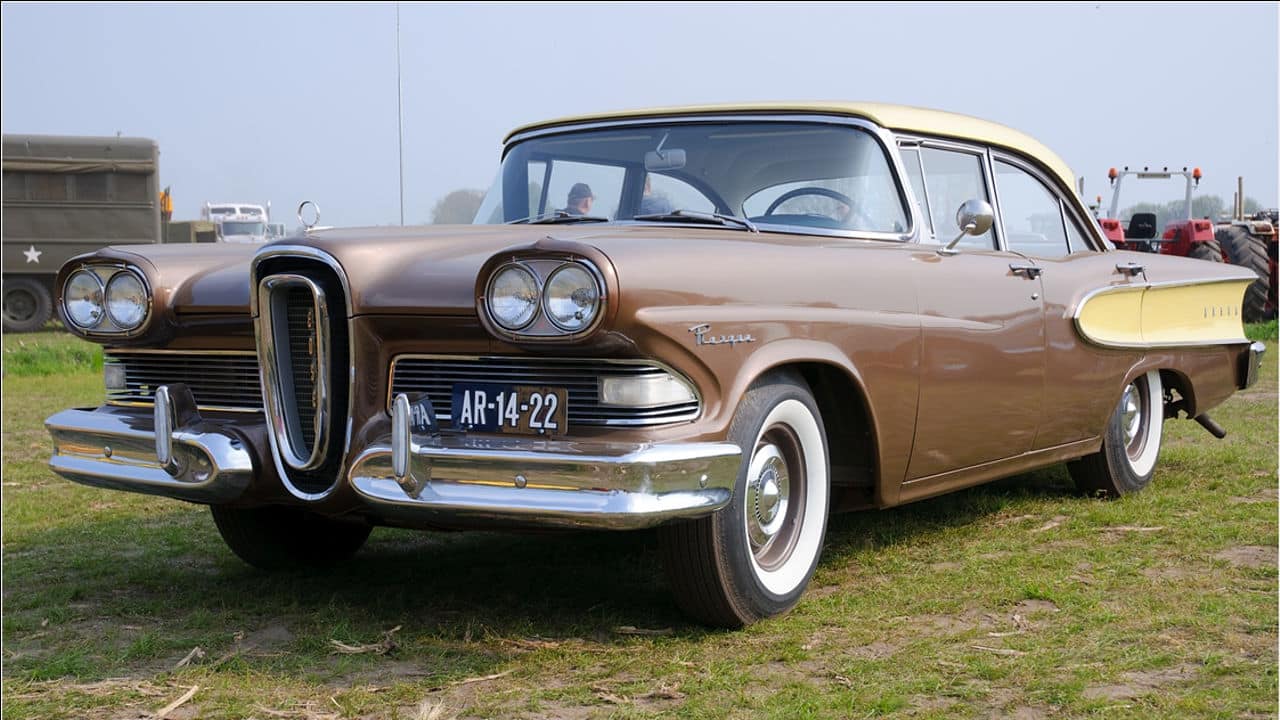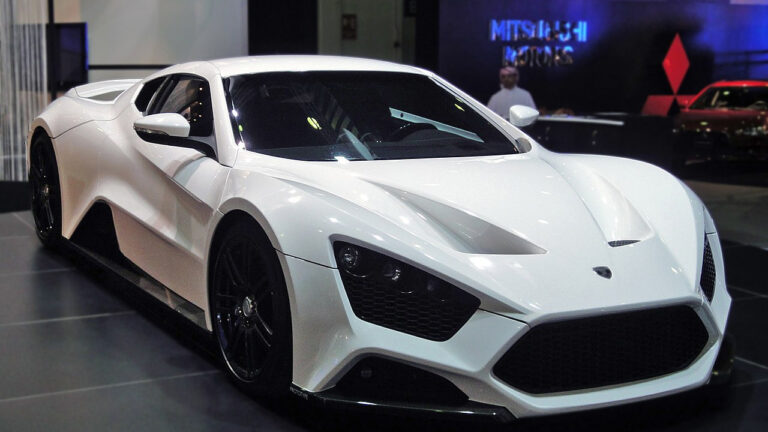13 Rare Collectible Cars That Are Almost Worthless Today

Collectible cars are often synonymous with high-value classics and rare, limited-edition exotics sold at auctions or passed around among enthusiasts. While this is usually the case, some rare models aren’t such hotcakes.
There are, indeed, rare collectibles with relatively low value. These cars prove that being offered in smaller numbers does not guarantee desirability or street cred. Collectors typically look for cultural importance. The more unique their historical significance, the higher their value is likely to be. On the other hand, a car may have a rich history but still suffer from low demand due to a whole other set of reasons.
For example, obscure or niche brands can sometimes have limited appeal to collectors, no matter how rare they are. Of course, there are many other reasons why a good candidate for “collectible” status might turn out nearly worthless — unattractive design, scarcity of parts, market trends, lack of documentation, and artificially created “rarity.”
We understand some rare cars that are almost worthless by conventional standards still hold significance for enthusiasts who appreciate their unique qualities and stories. That said, these 13 prove that rarity does not always guarantee demand. They are surprisingly affordable despite their rarity.
AMC Pacer (1975-1980)

The Pacer’s near-worthlessness is due to the same reasons they’re relatively rare today despite their significant numbers totaling 280,858 between 1975 and 1980. 1976 was the Pacer’s best year when it sold 117,244 units. Such large numbers in just over three decades ago should have excluded the Pacer from a gathering of rare cars. So, here lies the issue.
As a car from the 1970s, most have obviously succumbed to rust and mechanical failure. It has never been hot among classic car collectors, so very few were lucky to be restored. The rest found their destiny at the scrap yard far from Jay Leno’s garage. The bubble-shaped Pacer was conceptually ahead of its time in some ways but often overlooked in the collector market.
Studebaker Lark (1959-1966)

The Studebaker Lark’s needless rarity explains why the car is not a market hottie. The American automaker churned out 554,138 units of this car in just seven years. Interestingly, the best year was the inaugural year (1959), when 131,240 units of the Lark rolled off the factory. It was a downhill trend from then as the numbers dwindled substantially to the end.
A comparatively low 8,947 were produced in its final year 1966. The Lark was among Studebaker’s last models before the company shuttered its doors. It could’ve saved the company (which it did, temporarily), but it wasn’t good enough. Today, it has an average sale value of around $9,000.
Chevrolet Corvair (1960-1969)

And you thought Tesla was first with the “frunk” idea. Few cars were as controversial or unique as the Corvair in America’s automotive history. A rear-engine configuration is better left to the Volkswagen Beetle, wouldn’t you say? The Corvair didn’t think so.
It came in various body styles, including a 2-door coupe, 4-door sedan, convertible, station wagon, van (Corvair Greenbrier), and pickup truck (Corvair Rampside/Loadside), all using the same rear-engine layout, particularly the air-cooled flat-six. This engine set it apart from most other American classics of that era that favored front-mounted, water-cooled mills.
The Corvair was the sole American mass-produced car using a rear-engine design, while the horizontally opposed (flat-six) might as well be a unicorn. It also used an innovative swing-axle rear suspension setup that, unfortunately, impaired its handling and worsened the controversy over this car. The worst came when Ralph Nader published his book “Unsafe at Any Speed” with the Corvair as the subject. It currently has a median sale value of just $13,750.
Ford Pinto (1971-1980)

The Pinto fared worse than the Corvair. It was the subject of a headline that read, “It’s Cheaper To Let Them Burn.” Indeed, Ford thought it was cheaper to pay for lawsuits arising from their customers getting injured or losing their lives to avoidable accidents than correcting a design flaw that made the Pinto prone to catching fire in rear-end collisions.
The Pinto’s infamous story is well documented and often cited as a symbol of corporate negligence as well as referenced in popular culture, including films, TV shows, and books. Although Ford sold over 3 million Pintos, about half got recalled. Who wants a car most likely to burst into flames if hit hard from behind? As a prop, maybe.
Pontiac Fiero (1984-1988)

The Fiero was an innovative mid-engine sports car that could never rise above a certain value threshold due to its reliability issues. It currently has a near-worthless median sale value of $3,060, with $20,900 as the highest recorded amount ever paid for it. That’s a surprising reality for the first American-made mass-produced sports car with a mid-engine layout.
It looked the part and reportedly handled nicely, wearing a plastic composite (Enduraflex) body known for its lightweight, rust-resistant qualities. Even its Space Frame underpinning was innovative for its time. Unfortunately, the Fiero was prone to engine fires caused by oil leaks and overheating issues with the 2.5-liter engine.
Nash Metropolitan (1954-1962)

The Nash Metropolitan was probably too “metropolitan” to be worth a lot today. Its massive cult-like followers will gladly tell you how the Metropolitan is so cheap and easy to restore, especially considering the widely available parts and simple mechanical design.
It was even popular with women and was marketed heavily towards them using the “it’s easy to drive, easy to park, and looks cute” marketing campaign. The U.S. and UK may have been the primary market, but the Metropolitan found its way to Canada and Europe. However, a relatively paltry 94,986 were produced in total, contributing to its rarity today.
Renault Alliance (1983-1987)

The Alliance is rare, but not because many people want it. Approximately 623,573 were built. It was essentially the popular Renault 9 adapted for the U.S. market — built in AMC’s Kenosha, Wisconsin, facility. Renault Alliance was Motor Trend’s Car of the Year in 1983. It was a product of the AMC-Renault partnership in the 1980s.
This car may not pull a lot of weight in the classic car market, but it will always be remembered for its role in the French-American transatlantic alliance, the American compact car segment, and AMC’s efforts to modernize its lineup in the 1980s. It still has dedicated followers but their numbers are too small for a meaningful influence on the car’s market value.
Yugo GV (1985-1992)

A company that folded twice got up to bring the Yugoslavia-made little Yugo to the United States. The new venture didn’t fare differently from Bricklin’s Subaru of America and the Bricklin SV-1. Malcolm Bricklin’s International Automobile Importers (IAI) partnered with the Yugoslav carmaker Zastava to offer the Yugo, already mired in controversies, as an affordable entry-level car in the U.S..
The enterprise ended with the Yugo joining an infamous list of the worst cars ever sold in America. It certainly lived up to its name (“GV” was short for Great Value), simple and affordable, but with too many issues surrounding the engine, build quality, rust, and electrical components. Barring gearheads who enjoy the challenge of maintaining and restoring problem cars like little Yugo, it’s mostly more of a curiosity than a high-value collectible.
Ford Edsel (1958-1960)

Like little Yugo, the Edsel is more of a curious oddity than a highly prized collector’s item. If Yugo is among the worst cars ever sold in America, Edsel was one of the most famous flops. Yes, Ford produced approximately 118,000 of them between 1957 and 1960, but the nameplate is remembered more for its marketing failure than the production numbers or the ambitious launch.
The Edsel project cost the company roughly $3 billion, most of which went to excessive marketing campaigns. It was a rolling lesson on market research, brand positioning, and consumer expectations.
Merkur XR4Ti (1985-1989)

You have to even know about it in the first place before you can think of buying one. A 1987 model changed hands in 2013 for just $220. Merkur is a name many people either don’t remember or have never heard. It was a European import by Ford during the 1980s to see if the US and Canada could get hooked on European performance.
Merkur (German for Mercury) was a new brand created specifically for this purpose. Thus, the Merkur XR4Ti was an American adaptation of the European Ford Sierra XR4i. It featured a turbocharged 2.3-liter inline-four engine derived from the Mustang SVO. Ford paired the engine with manual and automatic transmissions, producing 175 horsepower and 145 hp, respectively.
Chevrolet Chevette (1976-1987)

No, that’s not a typo. We don’t mean the Corvette or Chevelle: the Chevrolet Chevette, produced from 1976 until 1987. This car was instrumental in shaping America’s automotive industry, but it’s not nearly as celebrated as the Corvette or the classic Chevelle. GM built it on a global platform with input from its subsidiaries around the world.
As a result, the Chevette was made in America, Canada, Brazil, Argentina, and Venezuela. It was a truly global car that came in two-door sedan, four-door sedan, three-door hatchback, and even a two-door station wagon body style.
Considering that approximately 2.8 million got built over its 10-year production run, you don’t see the Chevette much today primarily due to lack of interest in the car. Only one is available for sale on Classic.com at press time.
Plymouth Horizon/Dodge Omni (1978-1990)

Despite being pioneers in the compact car segment, the Horizon and Omni twins are not highly collectible. They were the product of a transatlantic joint venture between America’s Chrysler and French automaker Simca. Chrysler hoped to use them against troublesome imports like Volkswagen’s Rabbit and the Honda Civic.
Plymouth got the Horizon and Dodge the Omni, but the mission was the same — maximum market coverage. Considering the timing, the Horizon and Omni deserve better than living under the shadow of other cars from the same era. The Horizon was the vehicle of choice for a team of drivers in 1981 that set a Guinness World Record for the longest distance traveled by a non-commercial passenger car within 24 hours.
AMC Gremlin (1970-1978)

You know one of those times when an automaker sets out to make an ugly car; that’s the aptly named AMC Gremlin for you. The car certainly lived up to its name by causing much controversy with its polarizing, unconventional “flying egg” design featuring a short wheelbase, boxy shape, and truncated behind.
It’s almost like the designers didn’t have time to finish their work, as the car got hurried into production in a remarkably short period. It rode on a modified version of the Hornet’s platform, with the rear section sawed off to create the compact Gremlin. They may have chosen the name to reflect the car’s quirky style, but it is more of an oddity today than a high-value collector’s item.





